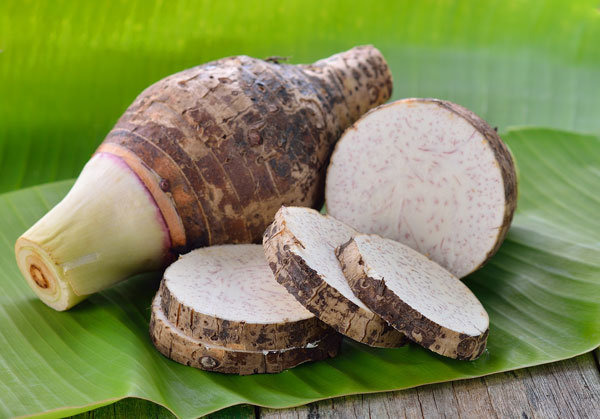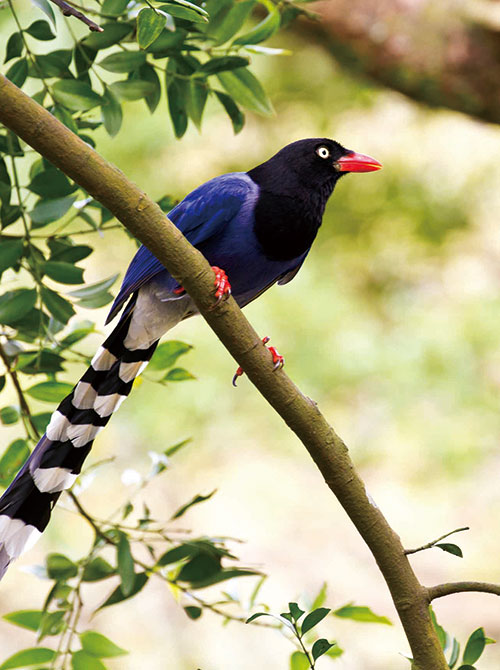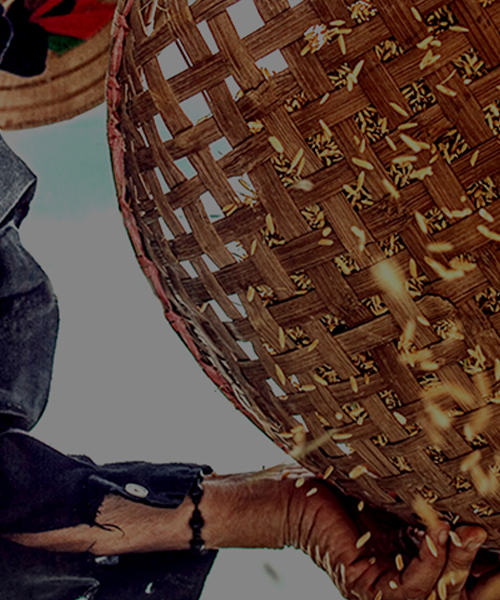Fluffy organic taros in Taiwan
- 2023-06-15
- 2023-06-15
- / 2081 Views
- /

Fluffy organic taros in Taiwan
When did Taiwanese start to grow taros? Immigrants might have brought taros from Indochina Peninsula in the 16th centuries. “Eastern barbarians”, the earliest record written by Chen Di in the Ming Dynasty (1603), indicated that corns, taro, rice, millet and sweet potato were the main starch food at that time.
Taros are herbaceous plants of the arum family (Araceae). Their edible rootlike corm can also be medicine. They grow well the hot and humid climate and prefers sandy, floppy and well-ventilated soil no matter they grow in water or dry land. The main production area, including Kaoshu in Pingtung, Kongguan in Miaoli and Jiashian and Shanming in Kaohsiung, accounts for more than 70 % of the total production area in Taiwan. Taro desserts in Dajia and taro ice cubes in Jiashian are popular souvenirs. Taro in Little Kinmen is famous for its fluffy texture and taro in Lanyu represents the ecological wisdom of Dawu culture.
The various cultivars of taro can be divided into two categories, mother taros (main corns) and child taros (small corns), according to their shapes and usages. Belonging to the mother taro category, the popular Betel taro is the most cultivated cultivar with the longest crop history. The oval corm with brown skin was named after “Betel Nut Taro” for the significant purple red network in the white flesh, which looks like a half-cut Beatle Nut. Except for the corm, taro leaves and stems are edible.

It takes at least 10 months to grow organic taros. Farmers usually start to plant from January to March and harvest from July to next April, especially during Double Ninth Festival. Conventional farming affects soil acidity with many chemical fertilizers whereas organic farming lowers climate risk with crop rotation of rice and taro . In Yilan, taro and lettuce are grown together to increase income.
The farm management of organic taro is very labor intensive, especially in the first three years. Each step is crucial from land selection, tilling soil, planting, thinning out seedlings, fertilizing, and weeding. Taros require a lot of fertilizer so organic farmers have to thin out seedlings for the strongest one to get the most nutrition. Farmers remove pests, mainly Spodoptera litura Fab., at night with head lights, use tea seed cakes to prevent apple snails and weed for 3 to 4 days to prevent more labor work. Materials used for pest and disease prevention rely on farmers’ experience. Despite all the demanding labor work, the balanced ecosystem and environment can always comfort farmers.
Organic taros are smaller than those from conventional farming and offer firm and fluffy texture. After harvesting taros by hands, farmers clean them with gloves and scouring pad and inspect insect bites thousand times. When we enjoy organic taros, don’t forget how farmers suffer from itchy hands caused by calcium oxalate from taros.
Fluffy taro with rich flavor is ideal to make Chinese and Western dishes, such as congee, desserts, taro balls, buns, bao, cakes and taro powder. To enjoyed the best taste of steamed taros, just serve with soybean sauce, salt or sugar.




